Leadership Conversations
Can Phil Do It? Make a difference at Cable and Wireless that is.
Published
18 years agoon

It’s amazing how porous corporate board and company meetings are! Discussions and decisions taken at supposedly confidential meetings are often fodder for the uptown cocktail circuit before they spread along the corporate grapevine. A number of analysts and business executives consulted, expressed no surprise at the apparent dismissal of Rodney Davis. As a matter of fact, many expressed surprise at the length of time that it took the Cable and Wireless Jamaica Board.
It appears that the proverbial writing was on the wall from last year and everyone knew except the 40-year old Jamaican who, born off Hagley Park Road in Kingston, spent most of his life in Canada before destiny finally brought him home in July 2005. Or, did he know? Was he negotiating his way out but ran out of time and space to negotiate with the publication of the company’s last quarter financials? The decision to terminate was widely rumoured last year but was apparently stayed, due to the instability of Cable and Wireless Jamaica (C&WJ).
However, published comments from new CEO Phillip Green seem to support the view that Davis might have been negotiating his departure. Green is reported to have said that “This was discussed with Rodney some time ago, and by mutual agreement it was deemed that a change of leadership was needed. I must say here that Rodney has done a fantastic job over the last couple of years in lifting the profile and image of C&WJ,”
Obviously not good enough to keep him until his contract expired.
In supporting Green’s comments, Company spokesman and Vice- President for Corporate Communications and Corporate Affairs Errol Miller told The Gleaner’s Wednesday Business that it was agreed that new leadership was required. “Rodney has agreed with the Board that a change in leadership is needed to take the Company in a new dimension.”
Last September, a year into his tenure, Davis and his bosses dismissed the rumours and insisted during a conference call that the young CEO would remain at the helm for the long haul.
“I would be the person who would tell Rodney that you only have two years,” said C&W Panama CEO, Chris Hetherington, who is also head of Cable and Wireless in the Caribbean. “I haven’t done that. On the contrary, I have said to Rodney, ‘it is a great business in Jamaica with a lot of potential; turn it as fast as you can.’ ”
Davis is also published as saying that he did not foresee leaving the beleaguered company before 2009. “We have a long-term incentive plan to maximise benefits to our shareholders by 2009. I wouldn’t see a horizon that ends before that … certainly not during my tenure,” he said.
And so, corporate Jamaica tongues were set wagging at Cable and Wireless International’s announcement that Australian Phillip Green had replaced Rodney Davis as CEO of its Jamaican operations with immediate effect. Not the news so much, but the way it was done. The late afternoon announcement left no doubt that Davis was sacked, but when questioned, Green said the change was made to strengthen the firm’s management and profile. This apparently could not have been done with Rodney around.
Executive Fallouts
Davis becomes the fourth CEO to depart the company since 2003. His sudden departure is an ongoing spate of executive fall out going back to Errald Miller, the longest serving CEO in the last fifteen years. Over the past seven years C&WJ has had four CEO’s, three prior to Davis; namely Errald Miller, Gary Barrow, Jacqueline Holding and Davis – and now Green – the fifth. Jacqueline Holden stayed in the job for only 10 months, succeeding Greg Barrow, who left in 2003. Davis took over from Holden.
Over the last three years, C&WJ has lost at least 23 senior managers, some either being shown the door or deciding to quit while they were ahead. These include chief financial officer Mark Thompson – now at Michael Lee Chin’s Advantage Insurance – and his deputy, reportedly let go last year. Insiders say they were part of a team of close friends installed by Rodney when he took over as CEO.
But by far the most visible and turbulent department has been Marketing. None of the Vice Presidents of Marketing have so far been able to keep their jobs for more than one or two years, and current head of marketing Stephane Lecuyer, another of Rodney’s hand picked associates, is rumoured to be under very close watch. Stephane took over the top marketing position late last year when the highly controversial Grant Mercer stepped down under very cloudy circumstances. Other senior marketing casualties in the recent past include Sandra Bodden, now at Anbell Media; Patrick Gillings who has since gone into his own business with fellow business partner Robert McCook; Collin Smith migrated to Canada with his family to take up a lucrative marketing position; Jacqueline Knight-Campbell, who has gone back to her very successful consulting business; David Burton who went to Wysinco. LLoyd Pusey who joined from RJR is also reported to be leaving. There’s no word on the whereabouts of Tamara Warden and Rowan Wade has recently joined MiPhone as Marketing Vice President.
Marketing Blunders
A number of marketing and advertising professionals are of the opinion that there’s a perception that C&WJ always seems to be following Digicel, the Irish company that literally knocked them into the #2 position in the mobile market, and their main nemesis. According to these professionals, C&WJ sought to out do, or compete directly for market share. Digicel on the other hand, seemed to deliberately ignore what Cable and Wireless was doing and focus on what was required to grow its business. If true, this strategy has worked and has left the former monopoly with many failed and/or questionable campaigns and, even managing to offend many Jamaicans in one particular campaign.
It’s very hard not to compare the two marketing strategies:
“They just failed to get the marketing strategy right, a typical example is walking away from Sumfest, a very successful event and went with Sunsplash. A big mistake that has reportedly cost them dearly and for which they are still paying for according to those close to the situation. How they could have done that is beside me. Sumfest was big with the under 35’s demographic a sizeable portion of the Jamaican population and a very profitable market segment especially for mobile services. Sunsplash was off for too many years for this demographic to even remember, other than to hear their parents and grand parents talk about when they use to go back in the 80’s. Many of these under 35’s are too young to remember or even experience Sunsplash. And that’s whom they were targeting. Big mistake”, commented one Entertainment Marketing executive.
An advertising executive said that he couldn’t recall a single C&WJ campaign that resonated –“well, maybe except one – Switch On. This for me was their best and most impacting campaign, but rather than build on the momentum developed they dropped it and went on to something else. I don’t even remember what they went to. The BMW promotion done a few years ago went bad also and had to be re-drawn, this was done very quietly, and the car handed over with no coverage. There was also a ‘pimp my ride’ type promotion done a year or so ago, but no follow-up. Nobody knows who won, and how the car now looks. Lost opportunities. I’m sure there are others but I cannot recall them at the moment.”
In agreement, another ad executive weighed in with her own perspective: “Pressa was a good campaign and had some potential. However a number of people I have spoken to seem to agree that a taxi man was not aspirational (sic) and identifiable with the young mobile market segment and failed to gain the desired traction. I am also somewhat amazed that given the millions of dollars they have spent on marketing that they do not have one sustaining property that they are building on each year. Take for example Digicel and the Rising Star programme: that generates immense revenues and goodwill each year for the Digicel brand. bMobile has nothing like that. ”
Common consensus on one particular campaign, The Clown: “This apparent direct attack at Digicel and their over 1.5 million subscribers at the time, with a clown, suggesting that Digicel and the 1.5 million Jamaicans were dunces, was a big mistake. You don’t insult your market, that’s a big mistake. That campaign and promotion disrespected a lot of Jamaicans and created a negative word of mouth campaign against the company.”
A well respected Brand strategist in commenting on the methods deployed by CW&J over the last few years suggested that, “The biggest marketing blunder to date, must however be the failure of the company from inception, to effectively brand their mobile product and service, in the face of imminent and growing competition from Digicel.
“In the time that the Digicel brand has been around, Cable and Wireless Jamaica must have branded and re-branded their mobile product at least three times.
“The last and current one, bMobile, was a major gamble. According to my reliable sources Cable and Wireless was warned against using the bMobile brand name for fear of homosexual connotations. It was felt that bMobile was far too close to ‘bman’, a Jamaican reference to a homosexual. It was felt that given the heightened homophobic nature of the market, this was a big risk. In order to counteract this perceived threat Cable and Wireless went out and contracted some of the most hardened anti-homosexual dancehall performers money can buy and embedded them in the new campaign. This apparently worked.
“There was even fear that Digicel would capitalise on this and unleash a guerrilla campaign that would have blown bMobile out of the water and killed the brand and product. All it needed was a DJ singing a song about the “bman phone” and that would be the end of bMobile. But I guess Digicel was not bloodthirsty and sought to win market share like a true Irish gentleman.
“My strategic branding approach would have been to give the “b” in the brand name a meaning, Cable and Wireless is known for its signature blue, this would have been a natural association, so brand it ‘blueMobile’ or abbreviated ‘bMobile’. That, I feel, would have far more strategic benefits and something to build on. ”
Demise of the Pre-paids
Mark, a 17-year old Kingston high school graduate remarked, “You would be surprised to know how popular and prevalent the “Please call and credit me” feature is among mobile phone users, especially my school friends and those under 25. As a matter of fact, we now use it to communicate, by typing a series of numbers to send a coded message. So when we do not have credit and cannot send text message we use the please credit me to send short messages.”
According to market watchers the Homephone Prepaid product seems to have suffered the same fate as the prepaid mobile service, where many of the owners do not have credit or very little call credit on their Mobile phones.
Sale of call credit for the Homephone product, introduced by Rodney Davis in an attempt to claw back the landline residential business, has not worked out as planned. Even though customers have applied for it, they have not bought the level of call credits required to support it. Also, this type of product requires intense customer support service. It seems that C&WJ did not provide this level of service and so customer complaints were fairly high.
The installation of Homefone prepaid phones has contributed to the plunge in first quarter profits, resulting in large increases in overall expenses, which rose 13 per cent. The sponsorship of ICC World Cup Cricket also impacted on first quarter figures.
VOIP cuts into overseas call revenues
The introduction of cheap low cost international phone calls, predominantly using the voice over Internet platform (VOIP) – Megaphone for example – has also impacted greatly on C&WJ international call revenues. With the rapidly growing availability of no-cost to low rates of JA$50 per day unlimited talk, VOIP has cut deeply into international call revenues for CWJ.
Culture resistant to change
But did Rodney Davis deserve to be fired?
“It depends on how you look at the problem”, one observer commented. “Cable and Wireless in Jamaican terms is an old company and it has it ways, grown and developed over the years coming from an arrogant monopoly position, to now having to operate in a free and highly competitive market place. That culture has proven very difficult and resistant to change and has been at the heart of the company problems. Executive and staff disaffection coupled with dislike was rife in the company and a lot of people rebelled against Rodney and the changes he was seeking to impose. This made his job, and the changes he wanted to effect, difficult to put in place. This was the situation faced by all his predecessors.”
Can Phillip Green make a difference?
This seems to be the question on everybody’s mind, maybe even Phillip Green, who describes his management style as “pretty conservative”, adding that he liked listening and thinking before acting.
Commenting on his “immediate” appointment, Green was quoted in the Jamaica Observer as saying, “The Caribbean, from a Cable & Wireless International’s perspective, is very important. It is a major part of its portfolio and Jamaica’s business is a big element of that. These moves to have me come in as the CEO were made to strengthen the management and profile of Cable and Wireless Jamaica.”
Financial and business analysts spoken to have all agreed that something is wrong with Cable and Wireless Jamaica and have asked the question, will another change in CEO fix it? Many agree that things are not likely to change, at least not in the next two or even three years. But does Phil Green have this much time to turn things around? Given the past tenure of his predecessors, this does not seem likely.
Green however is of the view that, “I am also a board member of Cable & Wireless International, so this was a natural process to bolster the profile of C&WJ. It will now get the right priority and will now become a more valuable part of our Caribbean portfolio.”
What exactly is Green proposing to do that the CEOs before him were unable to achieve?
He says he wants to strengthen the Company’s position as a full telecommunications service provider. A market position they have been seeking for some time now in an apparent attempt to differentiate themselves from Digicel.
“What am I looking to accomplish at C&WJ? Reliability, a trusted partner, value for money and service excellence.”
“There are three areas we want to focus upon,” he told the Jamaica Observer. “The first is customer service. Here we want to aim for excellence. The second is servicing the needs of small-and medium-sized enterprises. The third area is repositioning and strengthening the brand image of Cable & Wireless Jamaica. We have to make this company a true full-service provider of choice, servicing corporate, small businesses and consumer customers throughout the length and breadth of Jamaica.”
Asked how he intended to counter Digicel’s dominant position in the mobile market, Green said he wanted to only concentrate on Cable & Wireless’ customers and staff, and the value proposition for those who subscribe to its services.
“I’m focussed solely upon how we do it better for our customers,” he said. “The centrepiece of our business strategy will now be delivering service excellence and real value for money to people.”
“Team behaviour and everyone pulling at the one end of the rope is absolutely critical,” he said. “My management style will be focussed around what is best for the customers and how do we provide a better service. I have been impressed by C&WJ’s response effort to Hurricane Dean. It is that kind of team effort that is going to make us strong going forward.”
C&WJ under Green’s leadership will also be offering higher Internet speeds, more value-added products, specifically wrapping together mobile, fixed and Internet services to customers.
Not The Man For The Job
Comments in official company statements suggest that C&W International did not see Rodney Davis as the man to grow C&WJ’s operations going forward. A move which will require mounting a serious challenge to players like Digicel, Flow Communications and other upstarts in the telecoms sector; not to mention Carlos Slim’s America Movil, who has now acquired Miphone, (see Businessuite Vol.8, September 8, 2007, for full story) subject to regulatory approval.
“On behalf of the Board, I offer thanks to Rodney for bringing us this far,” said Len DeBarros, Chairman of the C&WJ Board.
It’s a pity Rodney did not get a chance to fulfil his goals. “I just want to stay focussed on my goals despite the challenges and take this organisation to greater heights in the telecom sector. We want to continue being number one and maintain that position.” He said in a recent press article. Will Phil?
Over to you Phil – JUST DO IT!
IN
Insert Picture.
Phillip Green is from Brisbane, Australia and has a passion for cricket. He has worked in the telecommunications industry for almost 30 years, the last 12 principally in Asia. He spent three years working in Washington in the United States for Cable & Wireless Global.
Green, 56, is a senior Cable & Wireless executive “with more than 20 years’ experience in a variety of diverse and challenging roles” in the telecommunications industry. He has worked in Asia, the United Kingdom, the United States, Japan and Macau. Jamaica will be his first Caribbean posting. Green comes to Jamaica from the Pacific, where he has worked since 2005. He has worked in Japan and the broader Asian region since 2002.
“I know I speak for the whole board of C&W Jamaica when I say that we are pleased to have secured Phil Green for this important role,” said Barros. “His depth of global experience and proven track record will enable us to drive the business forward.”
Green will remain a director of the C&WI Board and will report directly to Harris Jones, chief executive officer of C&WI.
“We are delighted to welcome Phil into our region,” said Hetherington, CEO, C&W Americas & Caribbean. “His experience and track record will help to further advance the Jamaica business in this competitive environment.”
Hetherington also acknowledged Davis for “his efforts and achievements to date, and in particular, for the work he has done in improving the reputation of our operation in Jamaica.”
OUT
Rodney Davis (pic)
Rodney Davis returned to Jamaica from Cable & Wireless Barbados where he was Chief Financial Officer. During his tenure he has strengthened the company’s business planning process, improved the quality and integrity of financial reporting and tightened the company’s credit management, achieving considerable savings. Prior to joining Cable & Wireless, Mr. Davis, a Jamaican national, had been the senior partner in charge at Ernst & Young’s Jamaica office since 2002. In that role he was responsible for the firm’s Corporate Finance practice where he worked closely with a number of leading Caribbean organisations to develop profitable strategies for their businesses.
At the time of his appointment, Cable & Wireless Executive Director of International Businesses, Harris Jones, had said: “I’m delighted that Rodney has agreed to join Cable & Wireless Jamaica as CEO. He faces a challenging market in which we’re making progress and I know that he and his team will rise to that challenge, accelerate our initiatives in broadband and mobile and continue to strengthen our offer to customers in Jamaica.”
Len de Barros, Chief Operating Officer, Cable & Wireless Caribbean, and Chairman of Cable & Wireless Jamaica, had added: “Rodney is joining Cable & Wireless Jamaica at a crucial time. Our markets are more competitive than ever and our customers are looking for innovative products and services, great value and first class customer care. Rodney brings a strong track record forged in C&W Barbados and in the Caribbean and Canadian financial sectors. I know he will be focusing on exceeding our customers’ expectations in every area and I wish him every success.”
Davis had commented, saying, “I’m delighted to be returning to Jamaica and to be bringing my family back here. I’m joining Cable & Wireless Jamaica at a critical stage and I look forward to building the success of our business to deliver an ever improving offer to our customers.”
Harris Jones had added: “I’d like to thank Jacqueline Holding for her commitment during her time with Cable & Wireless Jamaica. Under Jacqueline’s leadership the business has focused, in particular, on our two key services; broadband and mobile. C&WJ has increased awareness of our high-speed internet service and tripled broadband penetration. In mobile we’ve broadened our offer in value-added services such as payment flexibility, ring-tones, GPRS and SMS and substantially improved the coverage and capacity of our GSM network. Jacqueline also led our initiatives in up-skilling C&WJ staff and improving customer service.”
You may like
Business Insights
You Can’t Fix What You Can’t See: Why Jamaica Broilers’ U.S. Collapse Wasn’t Just Financial, It Was Strategic
Published
2 hours agoon
June 6, 2025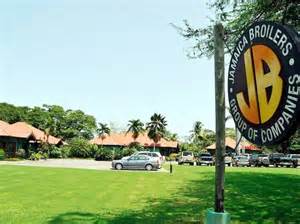
A supply chain leader’s take on how weak governance, poor integration, and reactive leadership cost Jamaica Broilers billions, and what Caribbean firms must do differently.
As a Jamaican-born supply chain executive working in the United States, I’ve seen firsthand how ambition without execution can quickly become a liability. That’s exactly what happened to Jamaica Broilers Group Limited. For nearly 70 years, JBG has been a symbol of Caribbean manufacturing excellence. However, in early 2025, the company announced its first quarterly loss in history, primarily driven by a $1.15 billion loss from its U.S. operations.
Recent news articles suggest that miscalculations in valuing inventory and biological assets contributed to financial losses. As a leader in operations, financial transformation, and supply chain audits, I can state:
This was not just a financial mistake. It was a strategic failure of systems, governance, and business leadership.
The Numbers Tell the Story
Based on regulatory filings and media reports from Our Today and the Jamaica Observer, here’s what went wrong:
- JBG admitted to using “unsubstantiated accounting valuation methodologies” affecting inventories and biological assets
- The company expects a material restatement of U.S. earnings
- It recorded a J$1.15 billion quarterly loss, compared to a J$1.3 billion profit the year before
- U.S. operating profit fell from J$2.98 billion to J$922 million over nine months
- The entire U.S. leadership team was removed, including Stephen Levy, the CEO’s brother
- External financial advisors were brought in, and reports were delayed twice before being released
This wasn’t an isolated oversight. It was a total breakdown in the systems that connect supply chain performance to financial truth.
Where the Strategy Failed
1. Operations and Finance Were Completely Disconnected
JBG’s misstatement of inventory and biological assets tells me one thing: Finance was not operating with real-time data from the supply chain. In an asset-heavy industry like poultry, valuation accuracy is directly tied to production yields, biological input tracking, and inventory turnover. If those systems are disconnected, your balance sheet is based on assumptions.
Insight: You can’t fix what you can’t see. Real-time inventory visibility is no longer optional, especially in a low-margin industry.
2. Governance Was Passive, Not Proactive
The issues in the U.S. operation were only uncovered during a quarterly review. This means that for months, the leadership based in Jamaica had no visibility into what was truly occurring. There were no warning signs, no escalation triggers, and no governance frameworks in place to identify these missteps earlier.
Insight: Foreign subsidiaries must be governed as extensions of the enterprise, not as independent silos. Operational governance is not a meeting, it is a system.
3. No Strategic Positioning in the U.S. Market
JBG tried to enter the U.S. poultry market as a mainstream player. No diaspora segmentation. No culturally driven SKUs. No unique value proposition. That meant they were competing directly with industry giants like Tyson Foods and Sanderson Farms, with no brand edge or pricing power.
Insight: In the U.S., don’t compete on commodity. Compete on culture, value, and customer alignment. JBG ignored the Caribbean diaspora, and with it, a major advantage.
4. Overexpansion Without Standardization
JBG operated two facilities in the United States, located in Iowa and South Carolina, without a unified operational model. The systems were not standardized, and the processes were not synchronized. The resulting consequences were significant.
- Ballooning operating expenses
- Fragmented performance metrics
- Reduced supply chain efficiency
Insight: Expansion is not growth unless it is built on a repeatable model. Two facilities without one process is not scale, it is confusion.
What They Still Haven’t Fixed
Despite public admissions and leadership changes, JBG has not yet addressed:
- Whether it will consolidate operations under a single facility
- How will it implement diaspora-driven branding and product segmentation
- What new controls are being put in place for real-time operational audits
- How will its ERP or financial reporting systems be upgraded
The response remains focused on personnel. But this was never just a people problem. It was a process problem.
My Recommendations for Caribbean Firms Entering the U.S.
As someone who has optimized supply chains, here is what I recommend:
1. Integrate ERP Systems Across All Operational Units
Ensure that inventory data, production yields, and cost accounting are aligned and communicate effectively with one another daily.
2. Establish Governance With Clear Escalation Protocols
Don’t wait for quarterly reports. Build monthly audits, early-warning triggers, and local compliance reviews into your operations.
3. Build With Culture at the Center
Diaspora markets are not just nostalgic, they are loyal. Own that connection with specialized SKUs and targeted marketing.
4. Standardize Before You Scale
Replicate only what works. Make sure your first location operates with precision before opening a second.
5. Tell the Truth Sooner
Market trust is built on clarity. Communicate failures transparently, and show the systems being built to prevent recurrence.
I’m not writing this to criticize JBG. I share this because I’ve witnessed this narrative repeatedly. This was a billion-dollar lesson, highlighting the need for Caribbean businesses to prioritize operational discipline over mere optimism when expanding into the U.S.
Financial breakdowns start as operational blind spots. Visibility isn’t a luxury—it’s the foundation of trust.
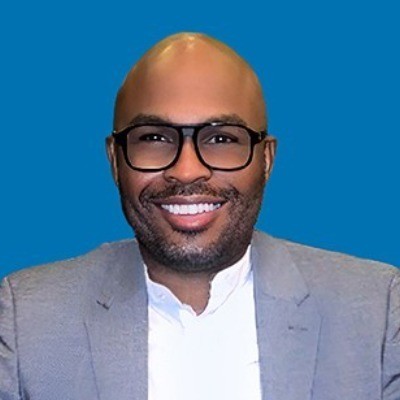
Jermaine Robinson, MBA, CSCP
Strategic Supply Chain Leader | Global Logistics & Distribution Leader | Driving Operational Excellence & Digital Transformation
The views and opinions expressed are those of the author/s and do not necessarily reflect the official policy or position of companies or clients for whom the author/s are currently working or have worked. Any content provided by the author/s is of their opinion and is not intended to malign any religion, ethnic group, club, organization, company, individual, or anyone or anything.
Leadership Conversations
Why Some CEOs Resist the Concept of Buy-In
Published
4 days agoon
June 2, 2025
In my years of working with CEOs during strategic planning, I’ve noticed a surprising resistance among some leaders to the concept of buy-in. To these CEOs, seeking input or engagement from employees feels like a sign of weakness. They believe leadership should be about mandating change and that buy-in dilutes their authority. This resistance, while common, often undermines the very success they aim to achieve through strategic planning.
The CEO’s Perspective on Buy-In
For many CEOs, strategic planning aims to create change—often significant, organization-wide change. They understand that change is difficult and frequently met with resistance, particularly from employees accustomed to the status quo. However, their response is often to mandate change, dismissing the need for employee involvement.
This approach stems from the belief that engaging employees in the planning process equates to surrendering control or being held hostage by their resistance. Confident in their vision, these CEOs view buy-in as an unnecessary hurdle, preferring to impose decisions with a “comply or leave” mentality.
The Case for Buy-In
My counterargument is simple yet profound: decisions are only effective if they are supported by those who must implement them. Dr. Robert Zawacki of the University of Colorado articulates this well in his book Transforming the Mature Information Technology Organisation. He argues:
Effective Decisions = The Right Decision X Commitment to the Decision (ED = RD x CD).
This formula highlights that even the best decisions will fail without the commitment of those responsible for implementing them. Commitment doesn’t arise from compulsion—it comes from understanding and shared ownership.
The Power of Participation
Engaging employees in the planning process fosters a deeper understanding and greater alignment. When employees are involved in crafting the parts of the plan that impact their work, they are more likely to accept and embrace the required changes. It aligns with the adage:
“If they create it, they understand it. If they understand it, they commit to it.”
Participation doesn’t mean ceding control; it means building a coalition of committed individuals who will champion the plan’s execution. Buy-in transforms resistance into ownership, turning a potential liability into an asset.
The Bottom Line
CEOs who dismiss buy-in as a weakness fail to see it as a tool of strategic strength. Leadership is not just about creating the right plan—it’s about ensuring that the plan succeeds. Engaging employees is not a concession; it’s a strategy for building commitment, aligning efforts, and achieving lasting change.
Buy-in isn’t just a nice-to-have; it’s the multiplier that turns the right decisions into practical actions.
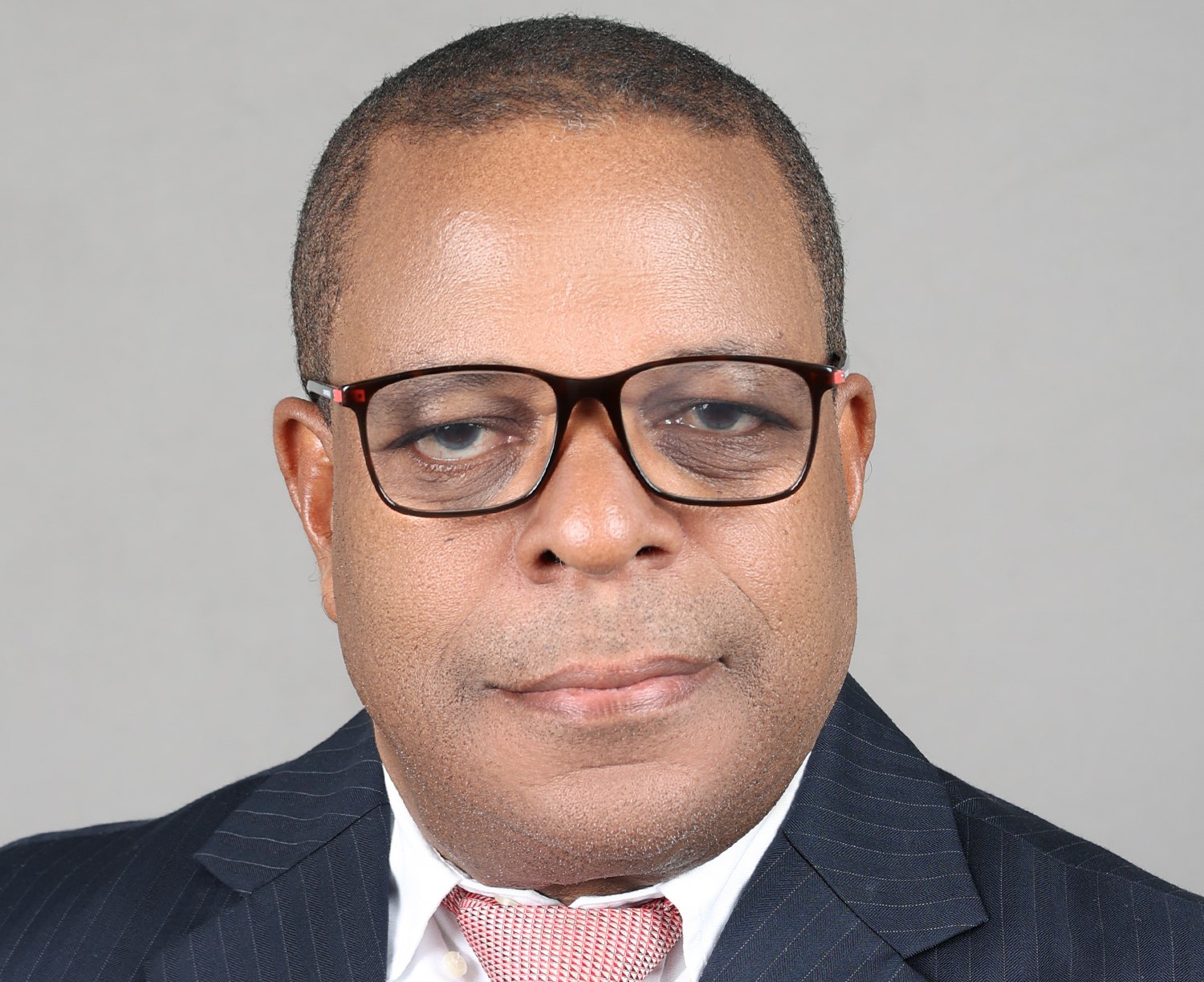
Ronnie Sutherland
Managing Partner – Strategic Solutions Limited. “I am a strategic planning facilitator ready to guide you through your next strategic planning process.”
Businessuite News24
Finance Minister Highlights Middle Managers’ Key Role in Jamaica’s Economic Growth
“As Minister, I see every day how important strong leadership is to sustaining the progress we’ve made in stabilising our economy, attracting investment and opening new opportunities for our people,” Mrs. Williams said.
Published
2 weeks agoon
May 23, 2025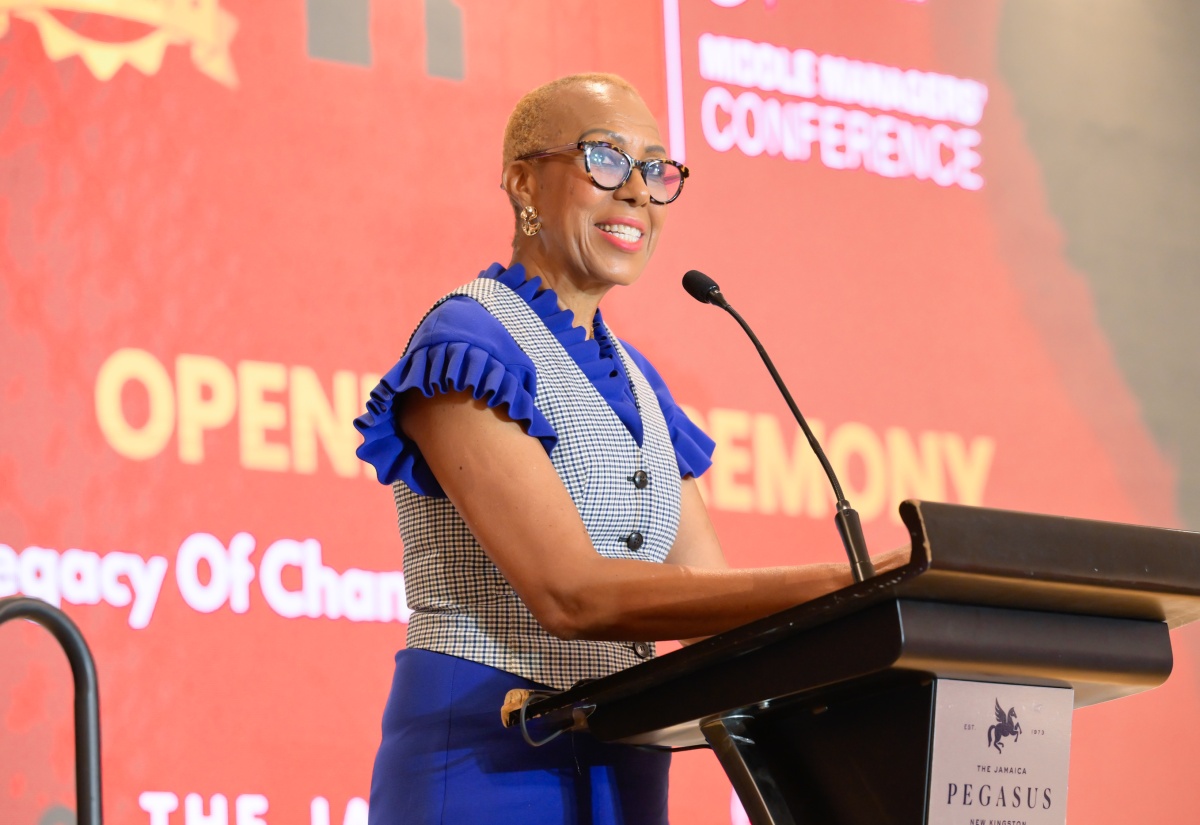
Minister of Finance and the Public Service, Hon. Fayval Williams, has underscored the pivotal role middle managers play in driving Jamaica’s economic progress.
“As Minister, I see every day how important strong leadership is to sustaining the progress we’ve made in stabilising our economy, attracting investment and opening new opportunities for our people,” Mrs. Williams said.
She declared that middle managers are “the energy that gets things done” as they move their companies along, exhibiting true leadership that shapes the transformation of teams and influences the drive towards national development.
“[True leadership] is the consistent demonstration of values, authenticity and strategic focus that leaves behind a real legacy… one not written in résumés but in lives changed, organisations built, and futures secured. I know that you know that titles may grant authority, but only influence grounded in service, discipline and integrity builds the trust that moves countries like Jamaica ahead,” Mrs. Williams said.

She was addressing stakeholders on day one of the Make Your Mark Consultants (MYMC) two-day Middle Managers’ Leadership Conference at The Jamaica Pegasus hotel in New Kingston on Tuesday (April 29).
Mrs. Williams noted that strategic and decisive leadership is especially critical in navigating current global uncertainties.
“In today’s increasingly dynamic global trade environment, Jamaica’s agility or ability to move swiftly, decisively and strategically is essential for national success; and at the execution level, it is you, it is our middle managers who drive that success.
You’re the ones ensuring that vision becomes reality, solving problems, coaching teams, delivering results and adapting to change with confidence and clarity,” she contended.
The Minister further pointed out, “In a Jamaica that is growing steadily stronger with sound leadership, prudent economic management, historic low unemployment rates, a transparent inflation-targeting regime, real investments in education, infrastructure, and innovation, it is clear that, as a country, we are on the right path.”
Meanwhile, Mrs. Williams lauded MYMC for organising what she described as the premier management conference in Jamaica, noting that the event is critical as Jamaica navigates an increasingly complex global economy.
She noted that this year’s conference theme – ‘A Legacy of Change, Transformation and Execution’ – is apt for the occasion.
“It reminds us that leadership is not about titles, offices, or positions. It’s about action [and] the courage to move when others hesitate. It’s about vision… the ability to see beyond today’s challenges and into tomorrow’s possibilities. Most importantly, it’s about influence – the ability to inspire people to believe in a cause greater than themselves, to push past limits to build institutions that will stand the test of time,” the Minister emphasised.
Mrs. Williams encouraged the participating middle managers to take advantage of the conference by actively engaging in the discussions, learning from the experts, sharpening their skills and strengthening their networks so they can be better and stronger leaders, driving Jamaica’s continued growth and transformation.
By: Donique Weston, JIS
Leadership Conversations
Reinvigorating Global Growth through Productivity Reforms – Nigel Clarke
Published
2 months agoon
March 29, 2025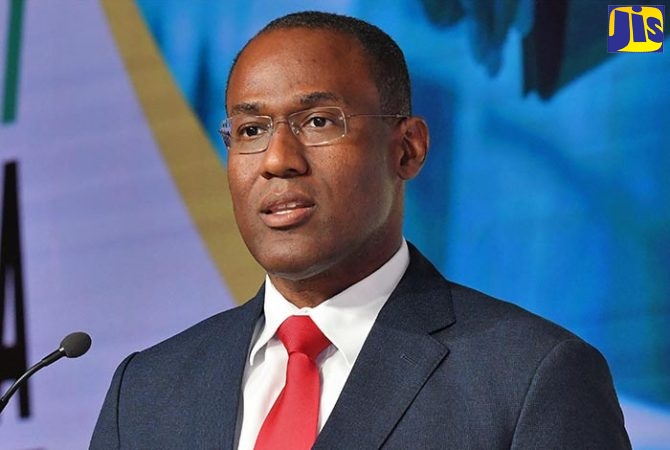
Distinguished guests, ladies and gentlemen, good morning. I want to thank the China Development Forum for inviting me to speak today. It’s an honor to be here, especially as this marks my first visit to China since joining the IMF.
This is the Year of the Snake—a year of renewal and transformation. A fitting symbol, given the pace of change around us.
Patterns of trade and capital flows are shifting. AI is rapidly advancing. Trade is no longer the engine of global growth it used to be. Divergences across countries are widening. And governments worldwide are shifting their policy priorities.
Meanwhile, global growth is steady but underwhelming. Our five-year ahead growth forecast remains at 3.1 percent—well below the pre-pandemic average of 3.7 percent.
This is largely due to declining productivity growth. Total factor productivity, which measures the ability to create more outputs with the same inputs, has been growing at a slower pace since the 2008-09 global financial crisis.
Reviving medium-term growth
My focus today, therefore, is on how to revive medium-term growth. The path to success lies in pursuing structural reforms to raise productivity.
This applies to all countries. In ageing societies—where the share of the working-age population is shrinking—productivity growth has a vital role to play in maintaining living standards.
It also applies to emerging market and developing economies trying to close the gap with richer countries. To provide better jobs and a higher stand of living, they too need to ignite productivity growth.
Without ambitious steps to enhance productivity, global growth is set to remain far below its historical average.
So, what can we do? Let me focus on two priorities that are especially relevant for Asia.
First, innovation. We know that productivity growth increases with technological advances—advances made possible through investments in research and development, a proxy for innovation effort.
Technology transfer, scientific collaboration and policies that fund basic research can foster the kind of innovation we need for long-term growth. And can have a sizeable impact when combined with closer public-private cooperation. In fact, our research shows that productivity growth in advanced economies can increase by 0.2 percentage point a year with a hybrid policy that boosts public research expenditure by a third and doubles subsidies to private research. Because these are average numbers only, the increase could be even higher in emerging markets and developing countries.
Investments in AI are a case in point. No longer an emerging technology, AI is beginning to revolutionize industries and reshape economies. We estimate that AI could boost global GDP growth between 0.1 and 0.8 percentage points per year in the medium term, depending on how it is adopted.
Second, boosting productivity through better resource allocation. The movement of labor and capital toward more productive firms and industries has long been an important source of overall productivity growth. As workers move from farms to factories, for example, their productivity increases dramatically. So too do their income and living standards, with spillovers to the whole economy.
There are many ways countries can achieve a better allocation of resources, including by implementing policies aimed at increasing the mobility of workers, such as re-skilling programs. And more importantly, by strengthening market forces, which create the necessary incentives, through prices and wages.
Asia provides an example of how such reforms can fuel growth. Over the past few decades, Asia prospered as employment and production moved from agriculture to manufacturing. Now, the region contributes over 60 percent of global growth, and is home to some of the world’s largest, most innovative companies.
Continued success, however, requires continued reforms.
Reforms such as strengthening the private sector. Entrepreneurs drive creativity and innovation, investing in sectors with the highest returns. To create the environment they need to thrive, it’s important that there’s a level playing field between the private sector and state-owned enterprises.
For many Asian countries, including China, reforms also involve expanding the services sector.
Services are a potentially important new source of growth. The sector has already drawn about half of the region’s workers, up from just over a fifth in 1990.
And productivity in some services sectors is high. In fact, our analysis shows that Asia’s labor productivity in financial services is four times higher than in manufacturing, and it’s twice as high in business services.
China
In China, reallocating resources to services would have another important benefit: by creating jobs and increasing incomes, it could help boost consumption. A welcome goal that is also a top priority of the government.
While household consumption as a share of GDP in China has risen, it is still among the lowest compared to OECD countries. A sustained increase in consumption’s share of GDP could lead to continued rapid gains in living standards and provide a welcome lift to global demand. This rebalancing of demand also requires reforms to reduce the need for precautionary savings, especially by middle- and lower-income households.
Overall, our analysis suggests that a comprehensive package of reforms to boost consumption and lift productivity could raise China’s potential growth by about 1 percentage point per year over the medium term. That translates into a level of GDP that is close to 20 percent higher than our baseline by 2040.
The IMF’s role
Through our policy advice, lending and capacity development, the IMF has consistently supported countries in establishing macroeconomic and financial stability as a foundation for growth.
To further help in this endeavor, we have formed a new IMF Advisory Council on Entrepreneurship and Growth. The goal is to get new ideas on how countries can ease regulatory barriers, adapt tax systems to a more business-friendly environment, and incentivize long-term savings, so countries have more to spend on innovation.
In this Year of the Snake, let’s embrace change and focus on reforms and policies to revive growth. This will lead to better prospects for people everywhere.
Thank you.
Remarks by International Monetary Fund Deputy Managing Director Nigel Clarke at the China Development Forum
Beijing, China, March 23, 2025
https://www.imf.org/en/News/Articles/2025/03/23/sp032325-dmdclarke-chinadevtforum?s=03
Environment
Special Report – ESG Transformation in the Caribbean: How Local and Global Companies are Reshaping Corporate Responsibility and Achieving Impact
Published
4 months agoon
January 26, 2025
As Environmental, Social, and Governance (ESG) factors gain traction worldwide, Caribbean companies are increasingly aligning with these principles to meet growing demands for transparency and responsibility. Globally, companies across industries are demonstrating the impact of ESG initiatives on their brand value, stakeholder trust, and even financial performance. In this evolving landscape, the Caribbean region is taking significant strides in its own ESG journey, often inspired by or collaborating with international corporations.
International companies have set benchmarks for comprehensive ESG integration that Caribbean firms are beginning to adopt. For example, Unilever’s “Sustainable Living Plan” and Microsoft’s carbon-negative pledge have illustrated how companies can drive social and environmental impact while strengthening business resilience.
Unilever’s initiatives, for instance, have led to substantial reductions in waste, water use, and greenhouse gas emissions, enhancing both operational efficiencies and brand perception. Likewise, Microsoft’s 2020 commitment to carbon negativity has inspired a wave of tech companies to adopt more robust carbon reduction strategies. Microsoft’s early achievements, including powering data centers with renewable energy, underscore how an ambitious ESG plan can benefit both environmental outcomes and investor confidence.
In the Caribbean, companies like Royal Caribbean Group are also setting ambitious ESG goals. The company’s “Seastainability” report highlights a multifaceted approach to ESG, such as implementing waste-to-energy systems and engaging in biodiversity projects. This not only demonstrates responsible environmental stewardship but also builds stronger connections with local communities, enhancing the brand’s reputation in the tourism industry
Similarly, Republic Bank in Trinidad & Tobago, in its 2024 annual report, outlined comprehensive measures to address climate risks, invest in social programs, and uphold corporate governance standards. This commitment to ESG aligns Republic Bank with global standards, fostering investor appeal and brand strength amid a shift towards responsible investment criteria.
For Caribbean corporate leaders, effective ESG integration requires actionable goals, ongoing monitoring, and transparent communication with stakeholders. To further align with international standards, regional firms can adopt practices like regular ESG impact assessments, clear data-driven metrics, and industry collaborations to address shared challenges.
According to PwC’s 2022 Caribbean Corporate Governance Survey, while over 60% of Caribbean firms acknowledge ESG’s strategic importance, board-level engagement on ESG remains limited, underscoring the need for greater governance oversight and education.
As Caribbean companies refine their ESG strategies, they are positioning themselves as competitive players in an increasingly responsible global economy. By adopting and adapting international best practices, these firms are not only driving positive change but also enhancing their appeal to a growing base of ESG-conscious investors, customers, and communities. This ESG shift is poised to shape the Caribbean’s corporate landscape, reflecting a larger global transformation that values sustainable and ethical growth. BS
Embracing ESG: Sagicor Group Jamaica’s Comprehensive Approach to Sustainability and Community

Sagicor Group Jamaica’s steadfast dedication to Environmental, Social, and Governance (ESG) principles reflects a core philosophy that permeates its vision, mission, and operational practices. Recognizing the role that corporate entities play in shaping a sustainable future, Sagicor has developed robust initiatives across each ESG component to drive value for stakeholders and contribute meaningfully to the Caribbean’s long-term resilience and prosperity.
Environmental Stewardship
Sagicor’s commitment to environmental sustainability is evident in its strategies for energy conservation, sustainable sourcing, and waste management. These initiatives are guided by a focus on reducing the company’s ecological footprint and supporting Jamaica’s transition to a climate-resilient economy.
Water Security Partnership: Recognizing the vulnerability of water resources, Sagicor has partnered with the government to ensure reliable water access across Jamaica. This collaboration aims to make water readily available even during droughts by 2025, underscoring a forward-looking approach to resource security.
Hybridized Work Environment: In line with global trends, Sagicor has adopted a hybrid work model to minimize its physical footprint. This strategy has significantly reduced the need for employee commutes, thus decreasing the company’s carbon emissions. Furthermore, office spaces have been outfitted with energy-efficient lighting, leading to a 75% reduction in energy consumption, which contributes to both environmental conservation and operational cost savings.
Digital Transformation: To further reduce its environmental impact, Sagicor has initiated a comprehensive digital transformation effort, aiming to minimize paper usage across the organization from 2024 to 2027. This shift not only reduces waste but also aligns with global best practices for sustainable business operations.
Eco-Waste Disposal: In collaboration with Recycling Partners of Jamaica, Sagicor Foundation has launched the Sigma Run Go Green Team to collect and recycle plastic waste from its events. This project has successfully recycled over 27,000 bottles, demonstrating Sagicor’s commitment to waste management and environmental responsibility.
Social Responsibility
Sagicor’s social responsibility framework centers on fostering community well-being, promoting social equity, and enhancing access to essential resources. Through targeted programs, the company supports marginalized communities and invests in sectors critical to Jamaica’s social and economic development.
Support for the Farming Community: Sagicor has created specialized financial products, such as agro-processing loans, to support farmers and fisherfolk. This initiative includes affordable healthcare options, reflecting Sagicor’s dedication to meeting the needs of those who often lack access to traditional financial services and healthcare.
Health and Education Investments: Over the past 26 years, Sagicor has invested more than J$600 million in Jamaica’s healthcare infrastructure, contributing to hospitals, children’s health, and disability support services. Additionally, Sagicor’s scholarship programs provide educational support at both tertiary and secondary levels, helping to foster a well-rounded, educated workforce for the nation’s future.
Empowering Women and Marginalized Groups: Sagicor offers entrepreneurial support programs and products designed to empower women and promote social equity. By providing family support leave policies and mentorship programs, the company cultivates a workplace environment that values inclusivity and diversity.
Governance Excellence
Upholding the highest standards of integrity and transparency, Sagicor’s governance framework is geared toward responsible, accountable leadership. This commitment is reinforced through rigorous policies, a focus on data privacy, and proactive cybersecurity measures.
Corporate Governance Structure: Sagicor has implemented a robust governance structure, with committees dedicated to investment, risk management, and IT oversight. This framework ensures vigilance across all operational areas, positioning the company to adapt to evolving risks and challenges. Furthermore, Sagicor’s property services are ISO certified, a mark of quality assurance and commitment to excellence.
Data Privacy and Cybersecurity: Data privacy is a priority for Sagicor, which has established a comprehensive Data Privacy Programme. This includes appointing a dedicated Data Protection Officer and adopting a “Privacy-by-Design” approach for product development. In addition, Sagicor’s cybersecurity framework adheres to global best practices, supported by board-approved policies and active threat monitoring.
Regulatory Monitoring and ESG Framework Development: Sagicor stays at the forefront of ESG regulatory changes, actively monitoring emerging standards and aligning its practices accordingly. The company is currently building out a dedicated ESG framework, which will further integrate sustainability into its corporate strategy, ensuring long-term alignment with global ESG priorities.
Conclusion
Sagicor Group Jamaica’s multifaceted ESG approach exemplifies a commitment to responsible business that goes beyond profit. By addressing environmental impacts, fostering social well-being, and adhering to ethical governance practices, Sagicor not only contributes to the Caribbean’s sustainable development but also strengthens its position as a leader in the region’s financial and social landscape. The company’s dedication to ESG is an inspiring model for other organizations seeking to integrate these essential principles into their operations and support a more sustainable, inclusive future for the Caribbean.
Supporting Sustainable Development Goals: ANSA McAL Group’s Progress in Sustainability

ANSA McAL Group, one of the Caribbean’s leading conglomerates, has consistently advanced its commitment to sustainable development. Since 2015, ANSA McAL has actively invested in green energy, circular economy initiatives, and equal opportunity policies, supporting several United Nations Sustainable Development Goals (SDGs). In recent years, its efforts have amplified, with initiatives across renewable energy, waste reduction, workforce safety, cybersecurity, and ESG integration.
Here’s a closer look at some key projects and the SDGs they advance.
Investing in Green Energy
Since 2015, ANSA McAL has led renewable energy initiatives, generating over 121,000 MWh of green energy in 2023. This aligns directly with SDG 7: Affordable and Clean Energy and SDG 13: Climate Action. The recent signing of a Memorandum of Understanding (MOU) with Kenesjay Green Limited at COP 28 reinforces the Group’s dedication to advancing private-sector green energy projects across the Caribbean, which will help reduce regional carbon footprints and mitigate climate change.
Circular Economy
ANSA McAL’s circular economy approach addresses SDG 12: Responsible Consumption and Production. ANSA Packaging’s impressive 91% increase in glass collection for recycling in Trinidad and Tobago exemplifies this commitment, as does the Beverage Sector’s redirection of over 2.4 million kilograms of spent malt grains from CARIB Breweries. By providing these materials to farmers as low-cost animal feed, ANSA McAL reduces landfill waste and supports local agricultural economies.
Caribbean Natural Capital Hub
In collaboration with The Cropper Foundation, ANSA McAL’s financial entities, ANSA Merchant Bank and ANSA Bank, launched the Caribbean Natural Capital Hub SME Grant Challenge in Trinidad and Tobago. This initiative fosters corporate awareness on environmental responsibility, supporting SDG 15: Life on Land. By introducing a technical working group to explore nature-based reporting, ANSA McAL contributes to preserving and enhancing biodiversity.
Safe Working Environment
Prioritizing a safe workplace, ANSA McAL has reduced workplace accidents by 38% since implementing Safe Systems of Work training. Over 2,400 employees completed this program, aligning the Group with SDG 8: Decent Work and Economic Growth by promoting safe, productive employment.
Enhanced Cybersecurity
ANSA McAL’s investment in cybersecurity, including a new Security Operations Centre (SOC) with Security Orchestration, Automation, and Response (SOAR) capabilities, underscores the Group’s commitment to SDG 9: Industry, Innovation, and Infrastructure. The Group’s 24/7 threat detection and incident response services exemplify how technology can strengthen resilience in an increasingly digital business environment.
Equal Opportunity and Culture Transformation
In addressing SDG 5: Gender Equality, ANSA McAL has assessed gender equity in remuneration across five major job levels, with pay differences favoring women in some cases. The Group’s culture transformation initiatives also aim to create an enriching, equitable work environment. By promoting diversity and inclusivity, ANSA McAL supports work-life balance and a culture of growth.
ESG Framework and Enterprise Risk Management
In 2023, ANSA McAL established a Group-wide Sustainability Committee, with representatives from all sectors, alongside the launch of its ESG framework. This framework, designed to integrate sustainability into corporate strategy, supports SDG 16: Peace, Justice, and Strong Institutions by fostering governance that is transparent and ethical. Furthermore, the ANSA McAL Playbook & Risk Standard defines the Group’s minimum risk management requirements, emphasizing safety, governance, and long-term impact.
As ANSA McAL builds on these efforts, the Group sets a benchmark for corporate responsibility in the Caribbean, aligning its strategic direction with international best practices and the UN Sustainable Development Goals.
Kingston Wharves Limited’s 2023 ESG Initiatives: Advancing Sustainability, Community Well-Being, and Environmental Protection

In 2023, Kingston Wharves Limited (KWL) reinforced its dedication to Environmental, Social, and Governance (ESG) practices by aligning with eight key United Nations Sustainable Development Goals (SDGs). As a crucial logistics hub in Jamaica, KWL uses its position and resources to create a sustainable impact, not only within its operations but also across the Newport West Port Community and Jamaica as a whole.
Commitment to Quality Education and Community Engagement
KWL is committed to empowering local communities through investments in Quality Education. The company supports early childhood education, youth development, and sports, recognizing that strong educational foundations contribute to long-term community resilience. By funding and participating in educational initiatives, KWL helps foster future leaders, workforce talent, and engaged citizens who can drive regional growth.
Promoting Decent Work and Economic Growth
One of KWL’s core beliefs is that every employee’s life should be positively impacted through their employment. The company’s Decent Work and Economic Growth strategy aims to nurture personal, professional, and community development by providing resources for self-sustaining growth. This commitment includes competitive wages, career advancement opportunities, and a supportive work environment that reflects the SDG spirit of “teaching a man to fish.”
Fostering Sustainable Cities and Communities
Recognizing the importance of safe and sustainable urban environments, KWL is dedicated to building Sustainable Cities and Communities. KWL actively promotes civic pride and environmental responsibility within the Newport West area, organizing and sponsoring clean-up and recycling initiatives. This commitment extends beyond its facilities to positively affect the surrounding areas, creating a healthy, dignified, and welcoming space for both residents and visitors.
Environmental Conservation: Life Below Water and Life on Land
Protecting marine and terrestrial ecosystems is central to KWL’s ESG mission. Through programs aligned with Life Below Water and Life on Land, the company has implemented measures to limit environmental impact. KWL spearheads plastic waste reduction, coastal clean-ups, and recycling projects to safeguard marine biodiversity. On land, KWL’s responsible sourcing practices and biodiversity initiatives strive to balance human activity with the preservation of natural habitats.
Gender Equality and Community Empowerment
KWL champions Gender Equality within its organization, providing leadership opportunities and supporting initiatives that empower all employees, regardless of gender. This inclusive approach strengthens the company’s organizational culture, fosters innovation, and demonstrates the impact of gender equity in driving sustainable corporate success.
Industry, Innovation, and Infrastructure Investments
KWL’s investments in Industry, Innovation, and Infrastructure reflect its commitment to long-term economic and technological advancement. The company continually invests in state-of-the-art technology and infrastructure to support its sustainability objectives and strengthen its operations. This focus on innovation includes integrating environmental and social governance practices into all business functions, reinforcing KWL’s role as a regional leader in responsible business practices.
Climate Action and Tracking Carbon Footprint
KWL has intensified its Climate Action initiatives, measuring and tracking greenhouse gas emissions from electricity and fuel use to reduce its carbon footprint. Through these ongoing assessments, KWL can implement data-driven strategies that contribute to climate change mitigation. All new construction plans incorporate fuel, energy, and water efficiency mechanisms, aligning with global standards for sustainable development.
Waste Management and Recycling
In 2023, KWL made significant strides in recycling and waste management, emphasizing the importance of Eco-Waste Disposal. The company introduced plastic bottle recycling within its daily operations, strategically placing recycling bins throughout its facilities. By collaborating with Recycling Partners of Jamaica, KWL organized two community clean-ups focused on reducing plastic waste and educated employees about the environmental impact of waste disposal. A plastic bottle recycling competition further engaged employees and vendors, reinforcing KWL’s commitment to environmental stewardship within the port community.
Conclusion
Kingston Wharves Limited’s 2023 ESG activities highlight a comprehensive and proactive approach to sustainable business practices. Through targeted initiatives in education, environmental conservation, community well-being, and infrastructure, KWL exemplifies a responsible corporate entity that seeks to contribute to both local and global sustainability goals. As KWL continues to embed the UN SDGs into its business operations, it sets a standard for Caribbean enterprises committed to achieving a sustainable and resilient future for the region.
GraceKennedy: Pioneering Environmental, Social, and Governance (ESG) for Sustainable Growth
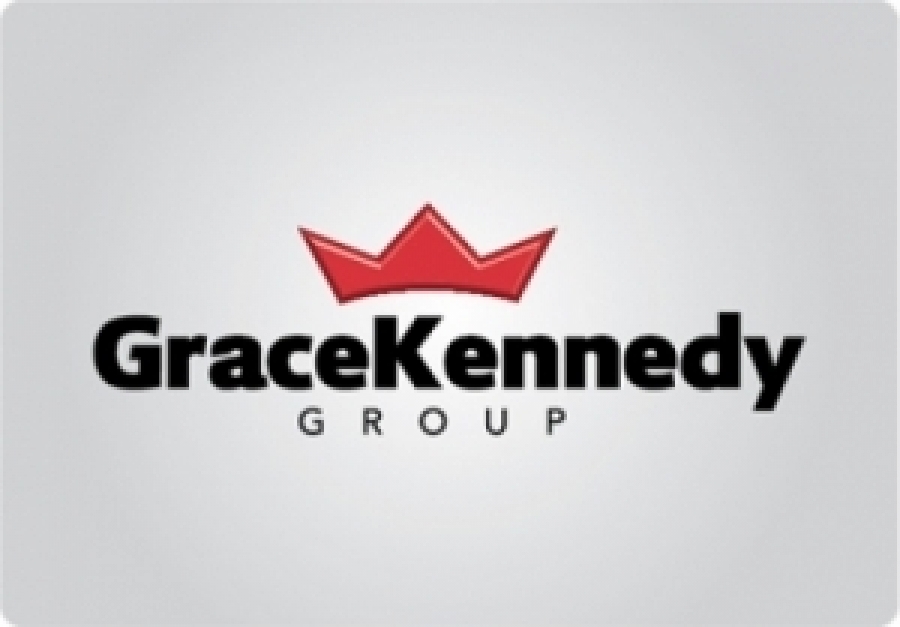
GraceKennedy (GK) is undergoing a transformative integration of Environmental, Social, and Governance (ESG) principles into its operations. This comprehensive approach, rooted in the company’s corporate governance values, underscores GK’s commitment to sustainable growth and resilience within the communities it serves. Following the release of its first ESG statement in 2022 and an extensive ESG materiality assessment in 2023, GK established seven primary ESG goals. These goals are set to guide GK’s trajectory toward a sustainable future while meeting the expectations of stakeholders.
Integrity and Governance: Strengthening Trust and Transparency
Upholding the highest standards of integrity remains at the core of GK’s values. By December 2024, GK aims to establish a dedicated ESG hub on its website, where stakeholders can access the company’s ESG policies and reports. In addition to broadening its stakeholder engagement program, GK plans to publish a comprehensive Environmental, Social, and Governance Policy by 2025, creating a transparent platform for dialogue and ongoing feedback integration.
Employee Welfare and Diversity: Building a Respectful Workplace
As part of its commitment to a safe and inclusive work environment, GK strives to be an employer of choice. Key goals for December 2025 include launching a comprehensive Health, Safety, and Wellness Policy and implementing diversity training across all GK divisions. With a focus on enhancing employee engagement, GK’s workplace initiatives aim to create an atmosphere where each team member feels valued for their contributions.
Responsible Products and Services: Bolstering Consumer Confidence
GK has made responsibility and data privacy cornerstones of its business practices. The company plans to launch a Group Data Protection Policy by the end of 2023 and enhance cybersecurity awareness by 2026. Additionally, GK’s financial literacy program, GK Money Sense, is evolving into a broad-based training initiative designed to help customers make informed financial choices by December 2025. Aiming to support healthier lifestyles, GK has also committed to an accelerated product development strategy that reduces fat, salt, and sugar content across its portfolio by the same date.
Environmental Stewardship: Minimizing Ecological Impact
Reducing environmental impact is central to GK’s ESG agenda. By December 2024, GK plans to implement strategies to reduce virgin plastic use in its products and, by 2025, launch a comprehensive sustainability strategy for all GK entities. Expanding its greenhouse gas (GHG) measurement and tracking efforts, GK intends to implement GHG reduction strategies across all operations by 2026, underscoring the company’s commitment to climate resilience and sustainable resource management.
Community Engagement: Supporting Vibrant and Inclusive Communities
Improving community well-being is a top priority for GK. By 2024, GK will introduce an online CSR portal within its ESG hub, tracking community-focused activities across the organization. GK has also set ambitious targets for volunteer hours and investment, aiming for 4,000 hours and J$370 million annually in community development by 2030. These initiatives focus on expanding access to education, promoting healthy lifestyles, and fostering environmentally sustainable practices, reinforcing GK’s role as a pillar of community support and development.
The “We Care” Report: Mapping GK’s ESG Journey
In September 2023, GK published its inaugural ESG “We Care” report, which documents the company’s sustainability journey and outlines its ESG goals and targets. This report represents a milestone in GK’s commitment to ESG, providing a transparent account of its progress, priorities, and vision for the future.
Through these initiatives, GraceKennedy is not only enhancing corporate sustainability but also contributing to a resilient future for its stakeholders and the wider Caribbean community. GK’s commitment to ESG principles marks a forward-thinking approach that sets the stage for a legacy of sustainable growth and community empowerment.

Scotia Group Delivers 19% Q2 Profit Growth, Net Income Hits $5B for the Quarter

You Can’t Fix What You Can’t See: Why Jamaica Broilers’ U.S. Collapse Wasn’t Just Financial, It Was Strategic

Why Some CEOs Resist the Concept of Buy-In

Businessuite 2023 Top 100 Caribbean Companies – US$ Revenue

Jeffrey Hall Is Set To Be One Of The Most Powerful Men In Corporate Jamaica And The Caribbean. So, Who Is He?
Which Company Has The More Sustainable Business Model….Edufocal or ICREATE and Why?

Trending
-

 Businessuite Markets2 weeks ago
Businessuite Markets2 weeks agoThe Strategic Importance of Investor Communication and Recommendations for Caribbean Listed Companies
-
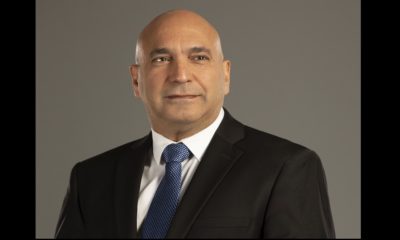
 Businessuite News242 weeks ago
Businessuite News242 weeks agoSagicor Group Jamaica Announces Organisational Changes to Support Business Growth
-

 Leadership Conversations4 days ago
Leadership Conversations4 days agoWhy Some CEOs Resist the Concept of Buy-In
-

 Businessuite Markets2 weeks ago
Businessuite Markets2 weeks agoSeprod’s Strong 31.9% Revenue Growth Tempered by Higher Finance Costs from Regional Expansion
-

 Logistics & Transportation2 weeks ago
Logistics & Transportation2 weeks agoUnilever Caribbean’s Strategic Shift: Embracing Outsourced Logistics for Enhanced Efficiency
-

 Businessuite Markets2 weeks ago
Businessuite Markets2 weeks agoKingston Properties Reports Robust Q1 Growth in Core Revenues and Net Income
-

 Businessuite News24 International3 weeks ago
Businessuite News24 International3 weeks agoUber Introduces Route Share: A New Chapter in Affordable, Shared Mobility
-

 Businessuite Markets2 weeks ago
Businessuite Markets2 weeks agoUnilever Caribbean’s New Distribution Model Marks Key Strategic Recalibration Amid Market Challenges


